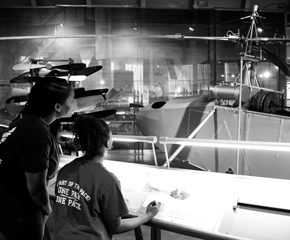Expanding Views: Charles Harrison’s Redesign of the View-Master
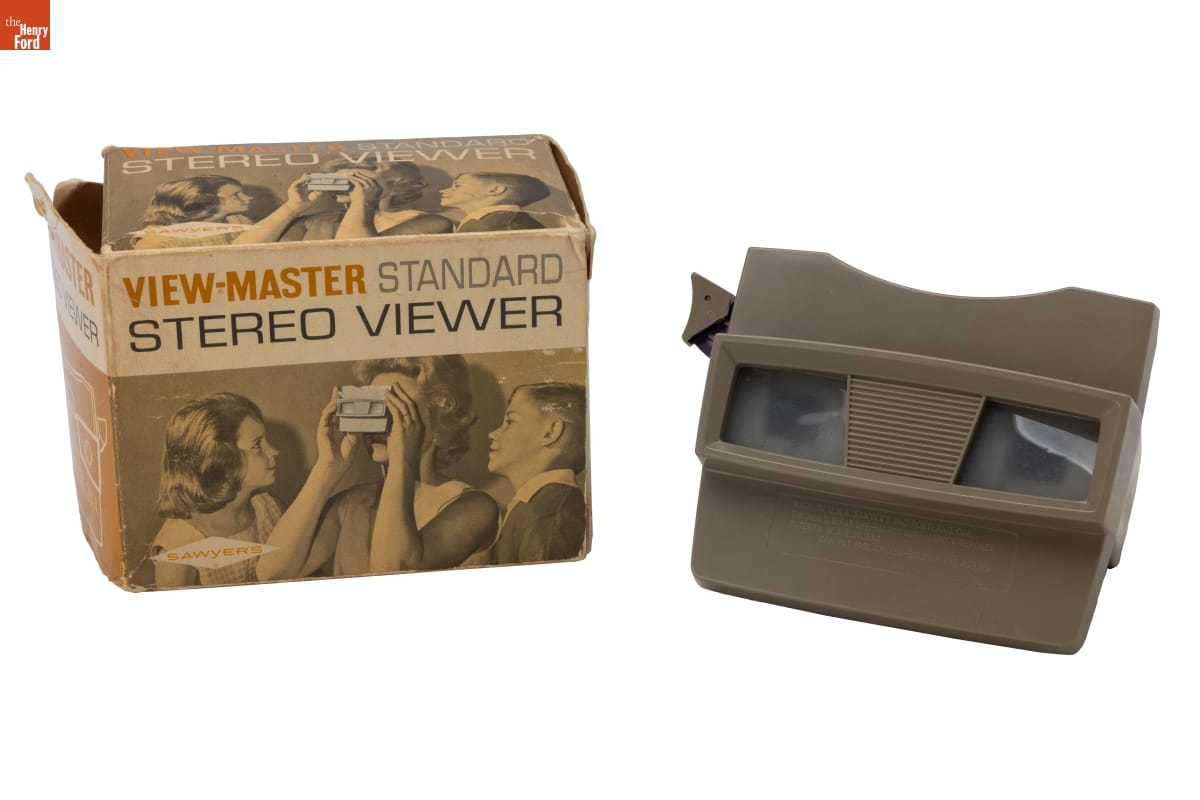
View-Master Standard Stereo Viewer, Model G, 1958-1962 / THF371561
Generations of Americans have memories of peering through a View-Master lens and being transported through the images shown in the cardboard reel — to Yosemite National Park, the streets of Bangkok, or even the set of a Batman movie. The wonders of the world became accessible anywhere, in an era before the internet made that experience commonplace. For many, including this author, the View-Master seemed like pure magic.
The View-Master model that made the device omnipresent in American society was the Model G. The View-Master Model G was introduced in 1962 and designed by Chicago-based industrial designer Charles Harrison for Sawyer’s Inc., the company that released the first handheld stereoscope 3D viewer at the 1939 New York World’s Fair. Although the View-Master was far from a new device when Harrison was tasked with its redesign, Harrison’s Model G viewer was the first to use injection-molded thermoplastics. Prior versions used Bakelite, a type of synthetic plastic which was costlier, heavier, and brittle. As Harrison later recalled, “My contribution was to design it for a different process, injection molding, that could produce units 10 times faster and would reduce cost considerably. The projected volume was high enough to support the tooling costs, while keeping the amortization costs low for each piece part. This made it possible to get the finished product to the consumer at the target selling price.” Harrison also redesigned the form of the View-Master, modernizing its appearance. The View-Master was a relatively minor project for Harrison (it took him less than two weeks!) but it is the object for which he is most well known today.
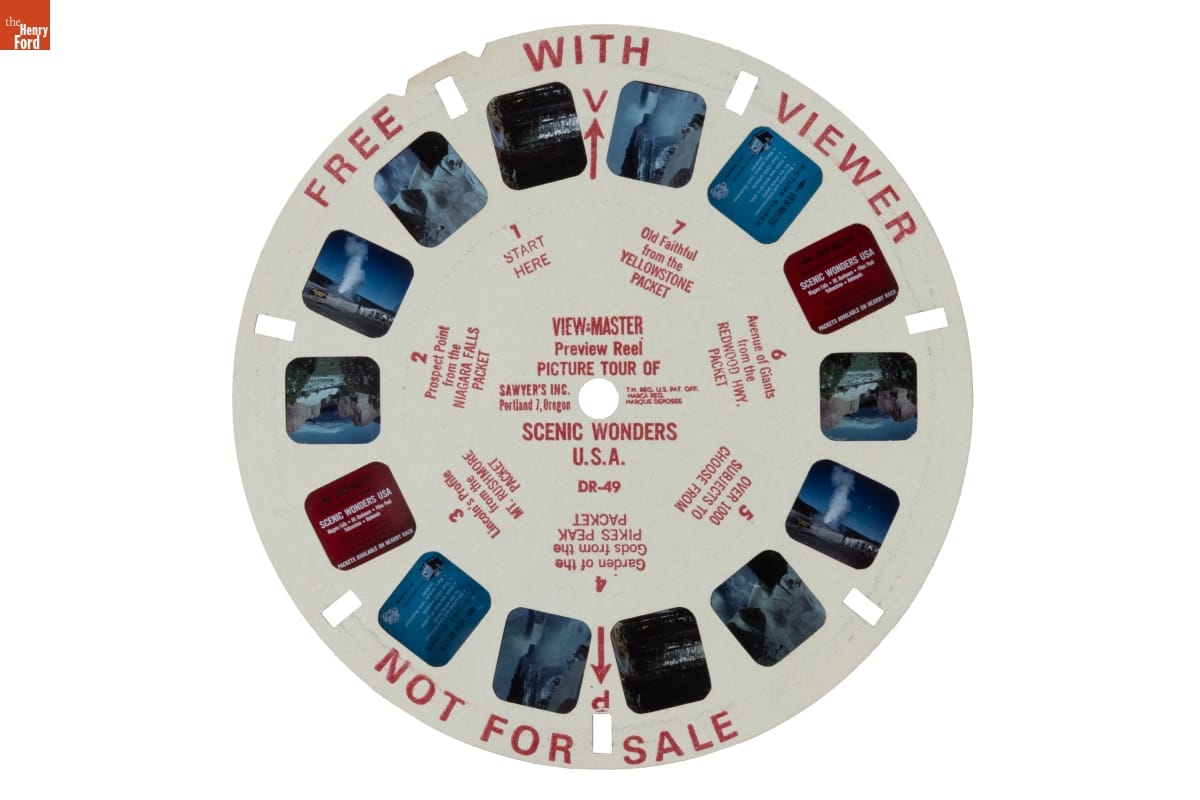
"Picture Tour of Scenic Wonders U.S.A." View-Master Reel, 1960-1966 / THF371614
Charles “Chuck” Alfred Harrison Jr. was born in Shreveport, Louisiana, in 1931. His family moved around frequently when Harrison was a child, from Louisiana to Texas to Arizona. He became interested in industrial design while studying at the City College of San Francisco and, after graduation, applied to all the accredited industrial design programs in the United States. He was accepted to the School of the Art Institute of Chicago (SAIC) on a four-year tuition and travel scholarship.
Although he was the only Black student in his classes at SAIC, Harrison felt that “in the arts, racism seemed to be less intense than other places.” He graduated from SAIC in 1954, but then was drafted into the U.S. Army, where he learned to be a mapmaker and was stationed in Germany for nearly two years. Harrison was discharged from the Army in May of 1956, and he returned to the SAIC. After a semester though, he transferred to the Illinois Institute of Technology and completed a master’s degree in art education because it was the only program with night classes and he needed to work during the day.
Harrison began to look for design work, but repeatedly faced racist companies and hiring managers. In the fall of 1956, he applied for an industrial design job at Sears. The company’s manager of design, Carl Bjorncrantz, told Harrison that he would like to hire him but that “Sears has an unwritten policy against hiring Black people.” Instead, Bjorncrantz hired him as a freelance designer, which was allowed. Harrison freelanced for numerous Chicago-based design companies in the following years, completing work for RCA, Grinnell Brothers Piano, Davis Sweeper Company, Williams Electric Company, Victory Manufacturing Company, Montgomery Ward, Allied Radio, and many others. Harrison began to work with injection molded plastics in 1957 — with butter dishes, his first mass-produced product, and later, with measuring cups, sweepers, and plastic pails. It was around the same time that Harrison, then freelancing under Robert Podall Associates, received the assignment to redesign the View-Master.
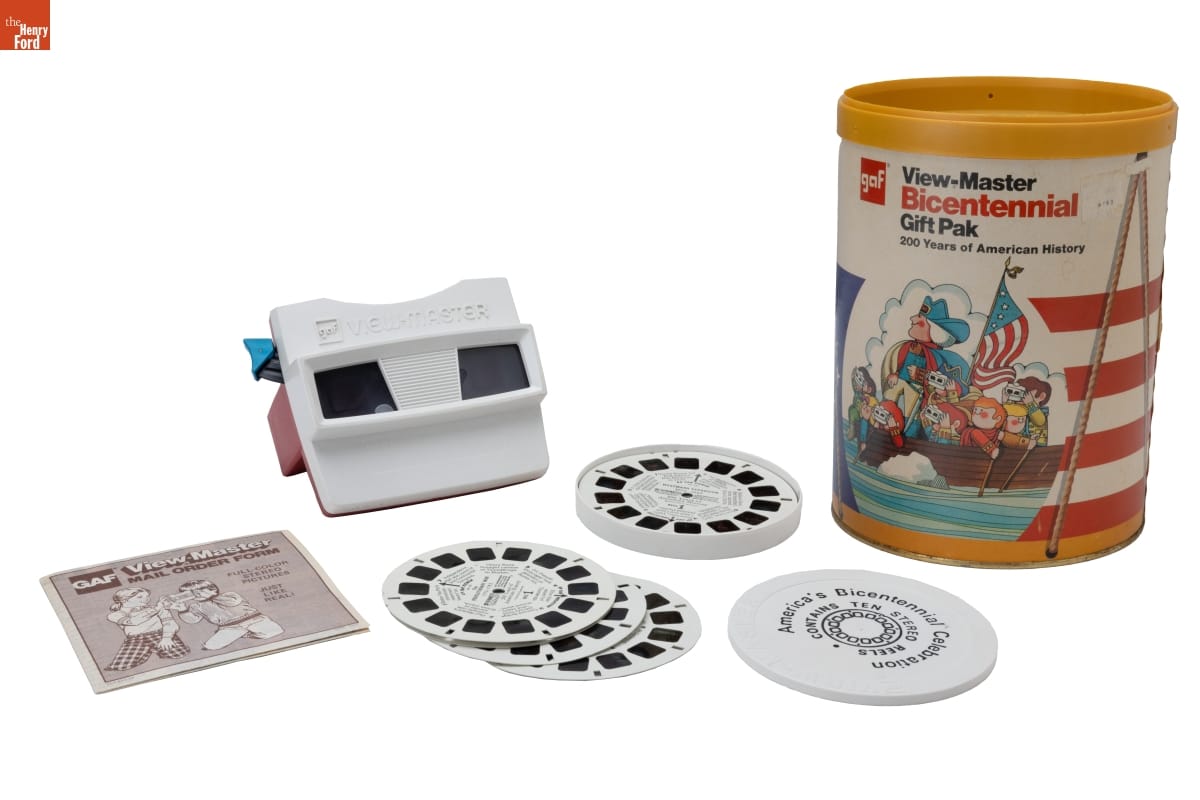
In 1966, General Aniline & Film (GAF) acquired Sawyer’s and began to produce View-Master. For the 1976 American Bicentennial, they produced a special Bicentennial Gift Pak with a special red, white, and blue version of Harrison’s Model G View-Master / THF371564
In 1961, Carl Bjorncrantz from Sears called Harrison, saying, “Well, Chuck, we can hire you now.” Harrison declined at first. But after a conversation, he took the job and became the first Black executive at Sears headquarters. Harrison rose through the ranks to eventually lead the design group at Sears. He designed hundreds of manufactured products in his career — lawn mowers and power tools, pots and stoves, and the very first plastic trash can. He retired in 1993, when the company closed its in-house design department.
After his retirement, Harrison taught at his alma mater, the School of the Art Institute of Chicago, as well as a few other Chicago-area colleges.
He was president of the Chicago chapter of the International Designers Society of America and involved with the Organization of Black Designers. In recognition of his impactful and groundbreaking career, Harrison received a lifetime achievement award from the Smithsonian’s Cooper Hewitt National Design Museum in 2008 and an honorary doctorate from SAIC in 2009. Harrison passed away in 2018.
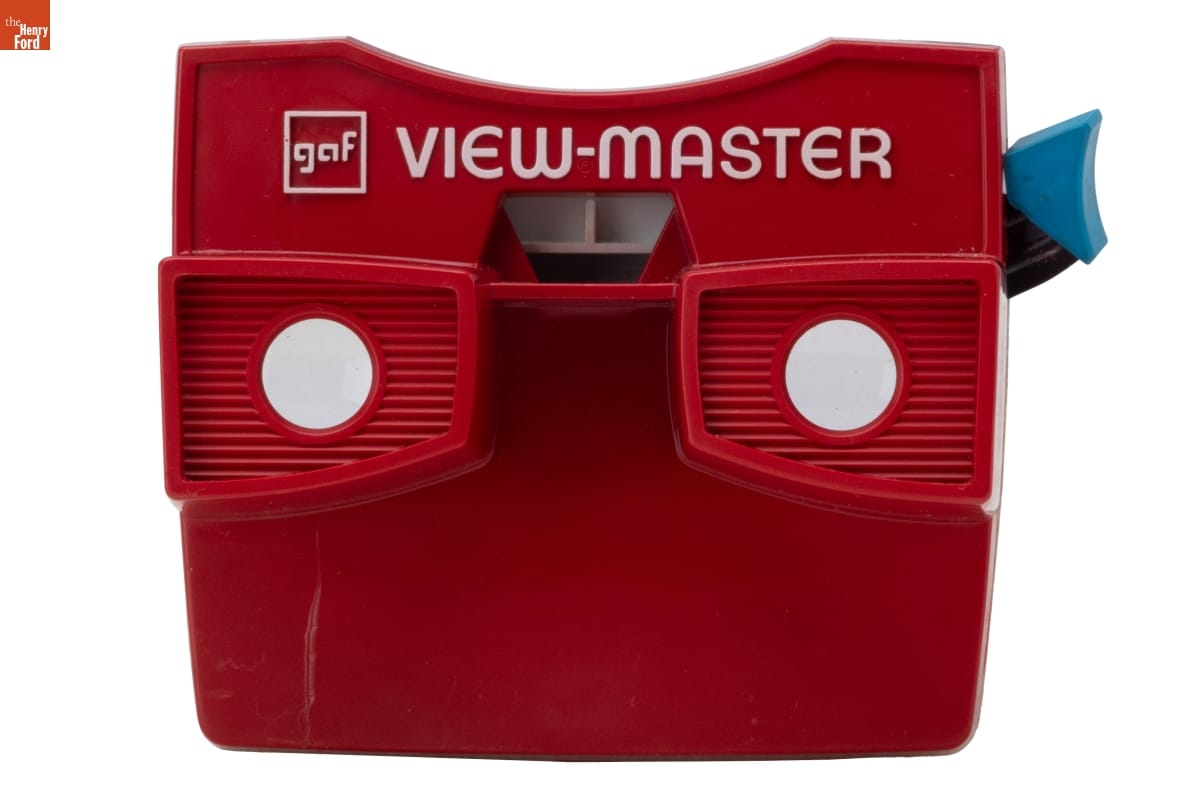
Red Model G View-Master, 1976 / THF371568
Katherine White is Curator of Design at The Henry Ford. She has fond memories of playing with a Charles Harrison-designed bright red Model G View-Master as a child. All quotes were excerpted from the book Charles Harrison published in 2005, A Life’s Design: The Life and Work of Industrial Designer Charles Harrison.

